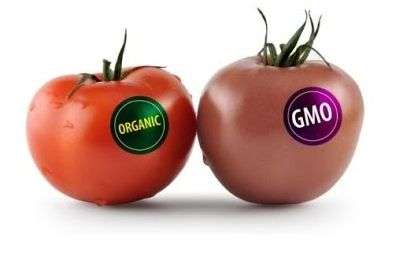GMOs Are Safe to Eat
Genetically Modified Organisms, Food Safety
Table of Contents
- Introduction
- Understanding GMOs
- 2.1. What Are GMOs?
- 2.2. The History of Genetic Modification
- 2.3. Common GMO Crops
- The Safety of GMOs
- 3.1. Scientific Consensus
- 3.2. Regulatory Oversight
- 3.3. Safety Assessments
- Debunking GMO Myths
- 4.1. Health Concerns
- 4.2. Environmental Impact
- 4.3. Corporate Control
- Benefits of GMOs
- 5.1. Improved Crop Yield
- 5.2. Enhanced Nutritional Value
- 5.3. Reduced Pesticide Use
- Consumer Awareness and Labeling
- 6.1. Labeling Regulations
- 6.2. Consumer Choice
- 6.3. Transparency
- The Future of GMOs
- 7.1. Emerging Technologies
- 7.2. Global Challenges
- 7.3. Ethical Considerations
- Conclusion: Nourishing a Growing World
1. Introduction
The topic of genetically modified organisms (GMOs) has sparked intense debate and controversy in recent years. Amid concerns about their safety and environmental impact, it’s essential to address the question: Are GMOs safe to eat? In this comprehensive exploration, we delve into the world of GMOs, dissecting the science behind genetic modification and evaluating the safety of GMOs in our food supply.
2. Understanding GMOs
2.1. What Are GMOs?
Genetically modified organisms, or GMOs, are living organisms whose genetic material has been altered through genetic engineering techniques. We examine how this process works and its applications in agriculture and beyond.
2.2. The History of Genetic Modification
The history of genetic modification dates back centuries but has evolved significantly in recent decades. We explore the milestones in the development of GMO technology.
2.3. Common GMO Crops
GMO crops have become ubiquitous in modern agriculture. We identify some of the most commonly genetically modified crops and their prevalence in the food industry.
3. The Safety of GMOs
3.1. Scientific Consensus
The safety of GMOs is supported by a broad scientific consensus. We delve into the extensive research and expert opinions that affirm the safety of genetically modified foods.
3.2. Regulatory Oversight
Governments worldwide regulate GMOs to ensure their safety. We discuss the regulatory frameworks in place and the role of agencies like the FDA and EFSA.
3.3. Safety Assessments
GMOs undergo rigorous safety assessments before entering the market. We examine the comprehensive testing and evaluation processes that new GMOs must pass.
4. Debunking GMO Myths
4.1. Health Concerns
Numerous myths and misconceptions surround the health impacts of GMOs. We debunk these concerns with evidence-based analysis and scientific studies.
4.2. Environmental Impact
The environmental impact of GMOs is a subject of concern. We assess the ecological effects of genetically modified crops and their potential benefits.
4.3. Corporate Control
Critics often raise concerns about corporate control in GMO agriculture. We explore the role of multinational corporations and their influence on the GMO industry.
5. Benefits of GMOs
5.1. Improved Crop Yield
One of the primary benefits of GMOs is their potential to increase crop yields. We examine how genetically modified crops can help feed a growing global population.
5.2. Enhanced Nutritional Value
GMOs can be engineered to enhance their nutritional content. We explore examples of biofortified GMOs that combat malnutrition.
5.3. Reduced Pesticide Use
GMO crops can reduce the need for chemical pesticides. We assess the environmental and health benefits of decreased pesticide usage.
6. Consumer Awareness and Labeling
6.1. Labeling Regulations
Many countries have implemented GMO labeling regulations. We discuss the importance of clear labeling for consumer choice.
6.2. Consumer Choice
Consumers have the right to make informed choices about the food they eat. We explore the implications of GMO labeling for consumer autonomy.
6.3. Transparency
Transparency in GMO labeling and information dissemination is essential. We evaluate efforts to promote transparency in the food industry.
7. The Future of GMOs
7.1. Emerging Technologies
Advancements in genetic engineering continue to shape the future of GMOs. We explore emerging technologies like CRISPR and their potential applications.
7.2. Global Challenges
GMOs can play a vital role in addressing global challenges such as climate change and food security. We examine their potential contributions to solving these issues.
7.3. Ethical Considerations
The ethical implications of GMOs raise complex questions. We discuss the ethical principles that guide the development and use of genetically modified organisms.
8. Conclusion: Nourishing a Growing World
In conclusion, the safety of GMOs is supported by robust scientific evidence and stringent regulatory oversight. While concerns persist, it’s crucial to recognize the potential benefits of GMOs in addressing pressing global challenges, including food security and nutrition. As we navigate the complex landscape of genetically modified organisms, a balanced and evidence-based approach is essential to nourish a growing world population and ensure a sustainable future for agriculture.
Do Follow Us On Twitter – https://twitter.com/Uniqverses708
We Have a Wide Range of Unique information For You On uniqverses.com
Please like, comment & Share if you want us to keep bringing these amazing and unique information for you.









